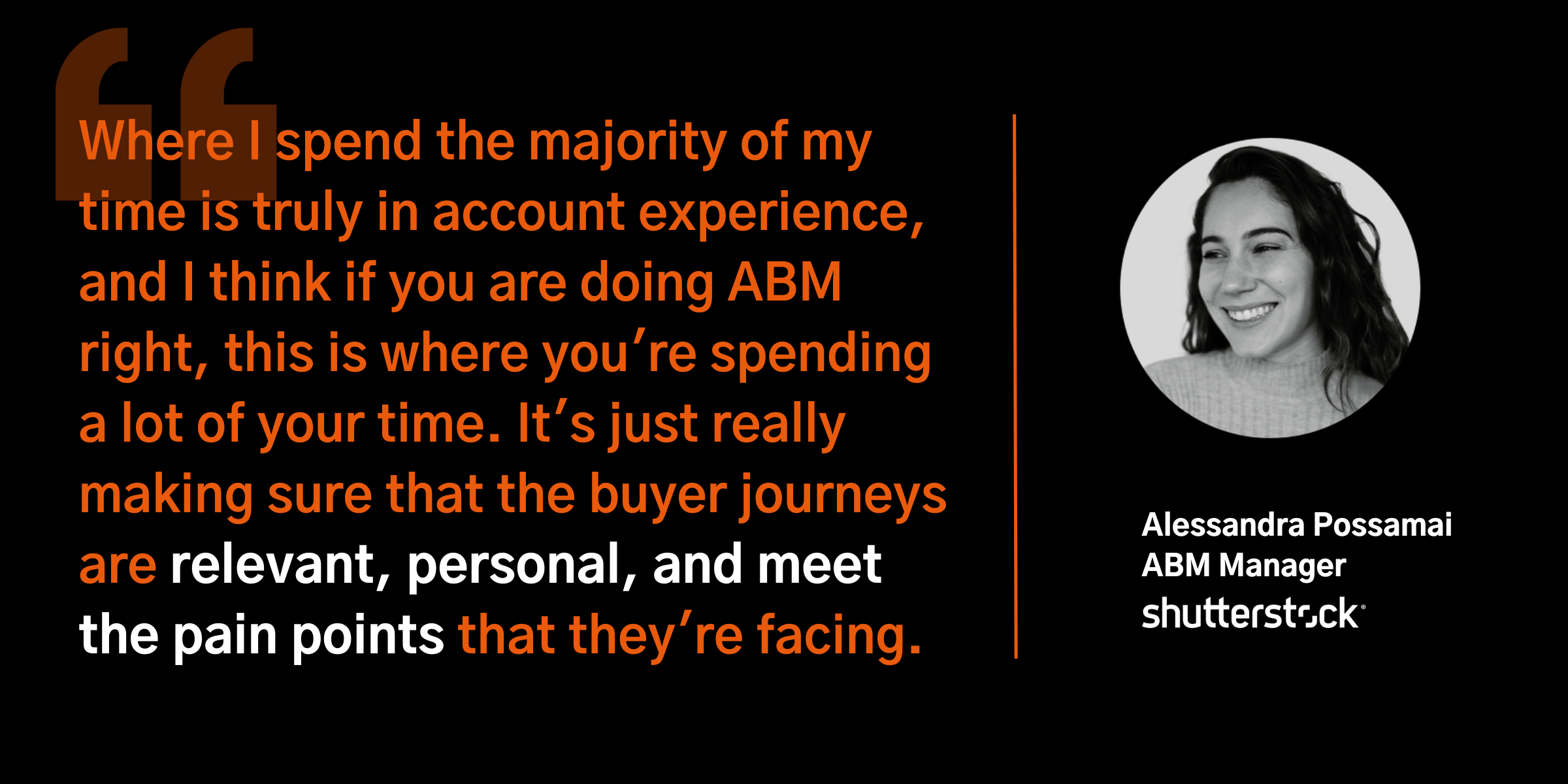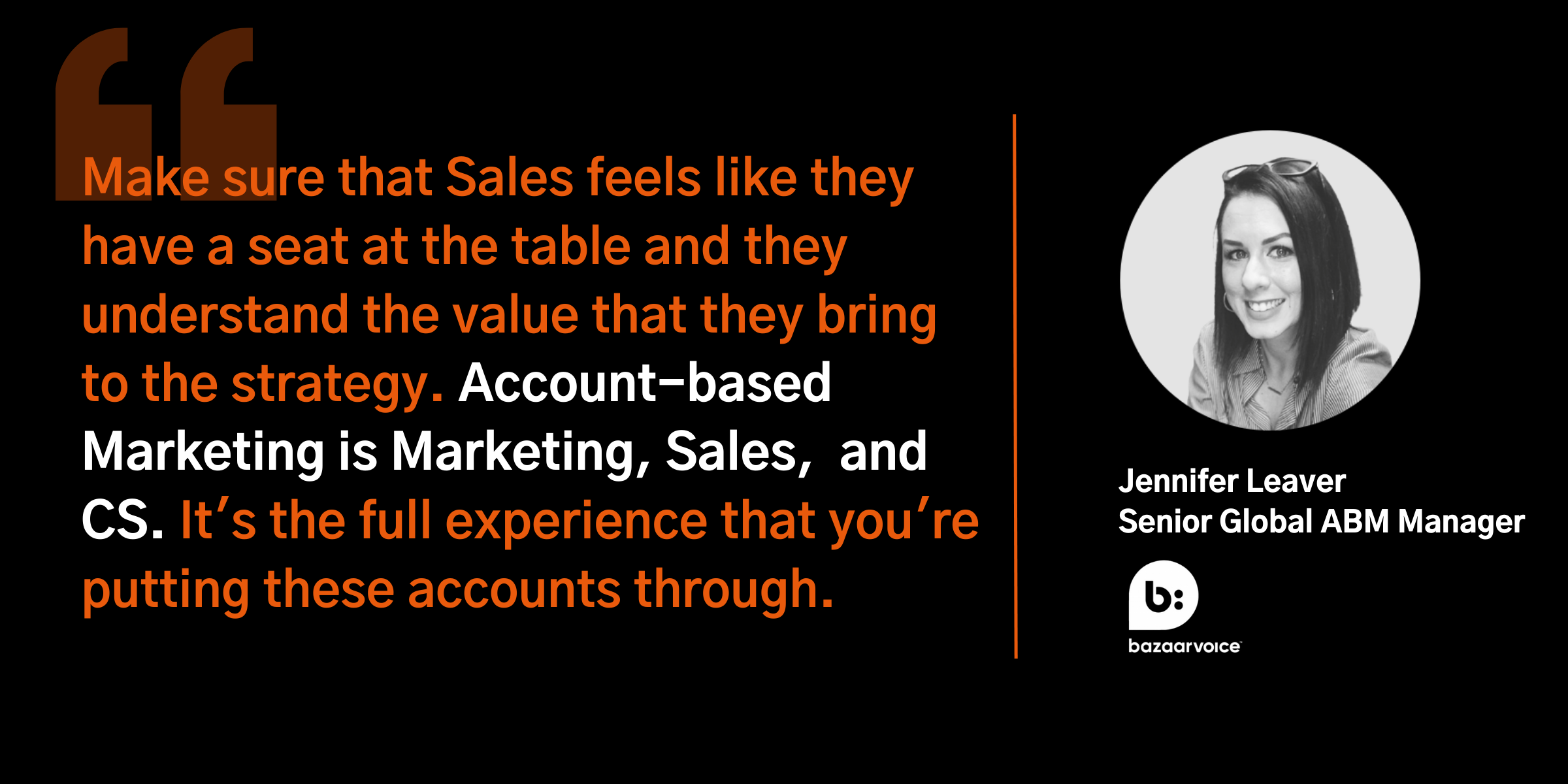What’s the secret to a successful Account-based Marketing strategy?
There are many ingredients to success – an account-led focus, Sales and Marketing alignment, the right data strategy, an orchestrated execution…, etc.
But what makes a strategy truly successful is the level of personalization in your content strategy.
You’ve got to get the message right.
Maya Angelou, the renowned American author, once said: “People will forget what you said, people will forget what you did, but people will never forget how you made them feel.”
Intelligence and personalization provide those guiding lights in your ABM content strategy.
They’re how you create that feeling for customers.
Talking about what they want to hear - not what you want to say.
But how should you blend intelligence and content to drive a personalization strategy that packs a punch?
Intent data is your secret ingredient.
Used well, understanding intent can provide the context and timing you need to land the right message, to the right accounts, at the right time.
How intent helps deliver a personalized experience
First, let’s take a step back.
To understand why you need intent data, you need to understand how customers research and purchase today.
A lot of awareness content consumption happens online, and in many cases, you may not be able to identify the exact content that specific prospects are engaging with:
- 67% of the buyer’s journey is now done digitally
- 87% of buyers want to self-serve part of all of their buying journey
- 57% of buyers already make decisions without ever speaking to a vendor rep
- 9 of 10 B2B buyers say online content has a moderate to major effect on purchasing decisions
This means that most brands have no idea what their potential, ideal customers are really doing “out there”, and are reliant on first-party data alone to inform their content marketing.
And while first-party insight is great to show how your customers (current and potential) are engaging with your own brand, you’re not likely to have first-party data on all, or new accounts of interest.
Without more insight, you are in the dark.
And that creates challenges:
- Your prospect could already be evaluating a solution before you’ve had the chance to speak to them.
- That big campaign you’re running to engage accounts on a topic you think is of interest? It’s irrelevant if your account is focused on another area.
It’s here that intent data can help.
Intent data is behavioral data at a company level, that allows you to understand what kind of content your target accounts are consuming online.
As a result, it gives you the insight to understand the intent behind their research.
Sounds useful, right?
Jon Clarke, Chief Product Officer of intent data Platform, Cyance, explains it rather well:
“Intent data removes a lot of the noice and the guessworkd in terms of how you consider engaging with your customers, by making sure that you personalize with them, and send out the right message, or the right proposition at the right time.”
What’s trending should inform your content strategy
Intent data allows you to understand the intent of your target accounts through insight into the content topics and keywords they consume over time.

You may already be considering how intent data can help your ABM strategy.
Here’s why intent and ABM are good partners.
- Intent provides a picture that’s relevant to YOUR business
Intent data enables you to create custom keywords and topic lists, allowing you to track intent signals that are specific to your business.
- Intent dives deeper than surface topics
You can group keywords into topics, and easily dig into the top trending related keywords within a single topic. If you’re writing content, this is a good place to start when planning.
- Intent helps you track the right accounts
You can also upload a list of tracked accounts that fit your ICP - so you can easily filter your dashboard and keep track of the accounts that are most important to you.
- Intent questions your assumptions and identifies content gaps
Using topic and keyword data ensures your ABM content strategy is aligned with what your audience is actively interested in - and helps you identify any gaps in your existing content.
Here’s how you can use intent data to inform your content strategy for each program type:
|
ABM program type |
Content strategy |
Campaign orchestration |
|
One-to-many ABM |
Leverage intent insights across your broader ABM target list (may be in the 100s of accounts) to tailor content assets to trending topics and keywords. |
Push data through to campaign channels. Push specific cookies through to a DSP for programmatic advertising campaigns or export a target list for LinkedIn advertising. |
|
One-to-few ABM |
Do a deep dive into the trending keywords and topics for your One-to-few set of accounts. Where are the similarities and where are the differences? Create a value proposition and account experience that speaks to the most prevalent topic/challenge across the One-to-few cluster and then add 10-15% personalization to the awareness and hero assets based on intent insights, as well as first-party data and account research. |
For One-to-few there may not be sufficient data for programmatic; however, your campaigns will likely be more tailored at this level. As well as in key content assets, leverage trending keywords in campaign messaging, such as LinkedIn ads, social selling copy and email outreach. |
|
One-to-one ABM |
Take the time to craft an account-specific value proposition that speaks to the specific challenges of the account and how you can meet them. Dig deeper into trending topics and keywords as you build out the value proposition and account experience assets. |
As with One-to-few, leverage trending keywords in the campaign messaging - not just the key content assets - to ensure you’re aligned with the account’s intent. |
4 ways intent data helps you win, grow and retain your most valuable accounts
1. Acquire new logos
Did you know that it costs 60% more today to acquire a new customer, compared to 5 years ago?
That means you want to invest your resources in the right way.
And a data-driven ABM approach can help you do that.
With One-to-one and One-to-few ABM programs, intent data provides the specific context to personalize your messaging and account-based strategy to an account.
To reach that account with the right message at the right time, you should consider:
- What topics the account is trending around
- Are they directly relevant to your solution?
- Are they trending around mostly Top-of the funnel (TOFU), Middle-of-the-funnel (MOFU) or Bottom-of-the-funnel (BOFU) keywords?
- Tag keywords by funnel stage so you can easily filter the view to see how much intent the account is showing.
- What competitors are they showing interest in?
- How can you differentiate your offering?
For an account that’s actively “in-market”, you’ll want to share BOFU content that differentiates you from the competition.
So make it unique, interesting, and maybe even a little controversial.
But – and this is an important “but” – don’t wait until accounts are showing propensity to buy.
Get relevant TOFU content in front of early-stage accounts so they’re familiar with your brand and consider you as the go-to expert by the time they’re ready to purchase a solution.
You should supplement intent data findings with first-party insights as well as account-level research to build out a more detailed picture of your account…
In fact, over half of marketers combine first-party and third-party data to see success.
Some personalized assets you could produce as part of the account experience include:
- A personalized playbook, highlighting how your strategy could benefit their bottom line
- A highly personalized, interactive hero asset that highlights your specific value proposition
- A memorable direct mail asset or leave-behind that is relevant, and summarizes how you can help them achieve their goals

2. ABM account expansion
ABM isn’t just about winning new business – it’s also about growing your most important accounts.
In fact, 85% of marketers said that ABM significantly benefited them in retaining and expanding their existing client relationships.
So, opt for an intent data platform that enables you to track different regions of an organization separately.
That way you can better understand the opportunity to grow your business in other regions.
Coupled with your existing knowledge of the account, monitoring the intent of other regions can be a winning strategy, and help you choose the right time to request introductions to other business units, or reach out directly.

3. Drive customer retention
‘Keep the customers that are most valuable to you’. This is a key component of any ABM strategy.
80% of marketers report improved customer lifetime value as a result of ABM.
Bringin intent into your ABM strategy will allow you to do more than just win new accounts; you can keep an eye on existing customers’ intent, to assess potential churn.
Are your existing customers starting to trend against solutions and competitor keywords? This is a sure sign that they’re starting to shop around, and means it’s time to put a stronger retention strategy in place.
For ABM as a whole, organizational alignment is key – not just between Marketing and Sales but across the whole organization – so it shouldn’t just be Marketers using your intent data tools.
Automate weekly intent reports to Sales, Product and Customer Success teams and track existing customer intent over time.

4. Win major deals
Lots of organizations go to tender for major deals.
This can sometimes leave you on the back foot if you don’t hear it early enough, and were not aware that a key account is in the market for your solution.
However, if you’re monitoring account intent, you can employ a strategy to build awareness for your solution within the account before they release the invitation to tender – so you’re ahead of the game!
Track keywords over time gives you the opportunity to spot early warning signals:
- Are organizations starting to consume content around specific solutions?
- Are competitor keywords (and your own brand) starting to surge?
Running ABM into the executive buying committee can give you the advantage.
Use surging intent keywords in your campaign messaging, combine it with your account research – and your campaign may be so relevant, you might not need to go to tender at all.
Intent data: Gain an ABM advantage
Intent data platforms are a secret ingredient for ABM success, giving a window into account interests, challenges, and buyer journey stages. With the right Account-Based Intelligence tech stack in place, you can run a truly personalized ABM program.
To sum up, intent data insights can help:
- Address active demand as well as engage accounts as early as possible
- Understand priorities for specific accounts
- Time your engagements to engage accounts in an active buying journey
- Understand how account priorities are shifting over time
- Act as an early warning signal for accounts that are about to churn
- Understand if an account isn’t suitable for one-to-one or one-to-few
Just 28% of marketers say they have an intent data strategy in place that is measurable.
So if you’re one of the marketers looking at intent, you’re going to be ahead of the competition and saving time, money, and resources.








